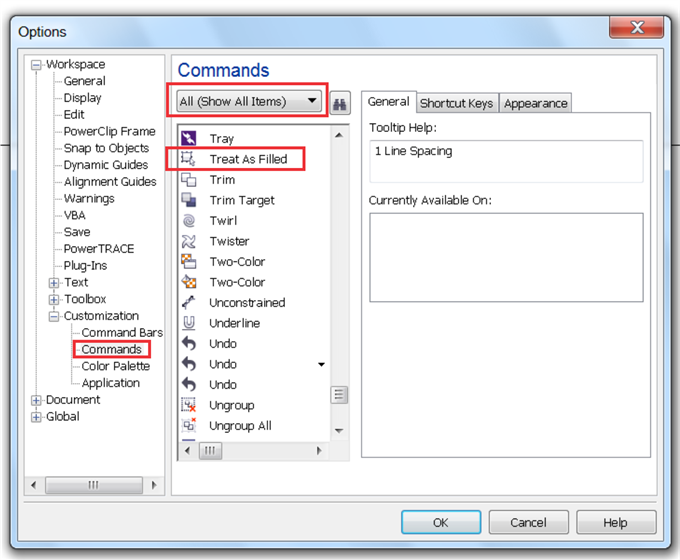Unveiling Design Customization: A Deep Dive into Changing the Selection of Unfilled Objects in CorelDRAW

Introduction:
CorelDRAW, a stalwart in the graphic design arena, continually evolves to meet the dynamic needs of designers. One often-overlooked yet crucial aspect of design customization lies in changing how unfilled objects are selected. This comprehensive guide aims to unravel the intricacies of this feature in CorelDRAW, providing both novices and seasoned designers with a thorough understanding of the tools available for enhancing the selection process.
I. Significance of Selecting Unfilled Objects:
- Design Precision: In projects where unfilled objects play a pivotal role, the ability to select and manipulate them with precision is paramount. Changing how these objects are selected ensures that designers have fine control over elements such as outlines, paths, and strokes.
- Workflow Efficiency: Efficient selection of unfilled objects streamlines the design process, allowing designers to make targeted modifications without inadvertently affecting other filled elements. This becomes particularly crucial in intricate designs where precision is key.
II. Basics of Changing Selection for Unfilled Objects: A Step-by-Step Guide:
- Accessing Selection Options: Navigate to the Options menu in CorelDRAW and select “Selection” to access a range of customization options. Within this menu, designers can modify how unfilled objects are selected, tailoring the software to their specific needs.
- Outline Selection Settings: CorelDRAW provides specific settings for selecting unfilled objects based on their outlines. Designers can choose to enable or disable the selection of objects based on their outline properties, offering a tailored approach to selection.
- Adjusting Tolerance Levels: Fine-tune the selection process by adjusting tolerance levels. This parameter determines the sensitivity of the selection tool, allowing designers to control the range within which unfilled objects are selected.
III. Advanced Selection Techniques:
- Selecting by Color: CorelDRAW offers advanced selection capabilities based on color attributes. Designers can modify the settings to select unfilled objects based on their color properties, providing a nuanced approach to customization.
- Selective Stroke Selection: For designs where strokes play a prominent role, CorelDRAW allows designers to selectively choose unfilled objects based on their stroke properties. This feature is particularly valuable when working with complex illustrations or technical drawings.
IV. Leveraging the Power of Object Manager:
- Customized Selection in Object Manager: The Object Manager in CorelDRAW is a powerhouse for design organization. Designers can further customize the selection of unfilled objects within the Object Manager, facilitating efficient management of complex projects.
- Grouping Strategies: Utilize grouping in the Object Manager to streamline the selection of unfilled objects within specific design components. This hierarchical approach enhances control and organization in projects with multiple elements.
V. Dynamic Application in Various Design Modes:
- Changing Selection in Drawing Mode: CorelDRAW’s versatile workspace includes specific modes for drawing, layout, and other design tasks. Designers can adapt the selection of unfilled objects based on the mode they are working in, optimizing the software for their specific needs.
- Specialized Selection in Isolation Mode: When working within isolated groups or objects, designers can customize the selection of unfilled elements within Isolation Mode. This ensures precision in edits without affecting the broader design.
VI. Troubleshooting and Best Practices:
- Handling Complex Designs: In projects with intricate designs, designers may encounter challenges in selecting unfilled objects precisely. Adjusting tolerance levels and utilizing advanced selection options can mitigate these challenges effectively.
- Regular Review of Selection Settings: Adopt a practice of regular review and adjustment of selection settings to align them with the evolving requirements of the design. This proactive approach ensures that designers always have the tools they need at their fingertips.
Conclusion:
In conclusion, changing how unfilled objects are selected in CorelDRAW is a nuanced aspect of design customization that can significantly impact the precision and efficiency of the creative process. As designers embark on the journey outlined in this comprehensive guide, they gain a deeper understanding of the tools available for tailoring the software to their unique needs. Armed with this knowledge, designers can navigate the diverse landscape of graphic design with confidence, ensuring that their selections are as nuanced and precise as their creative vision demands. Embrace the power of customization in CorelDRAW and unlock new realms of design possibilities.




